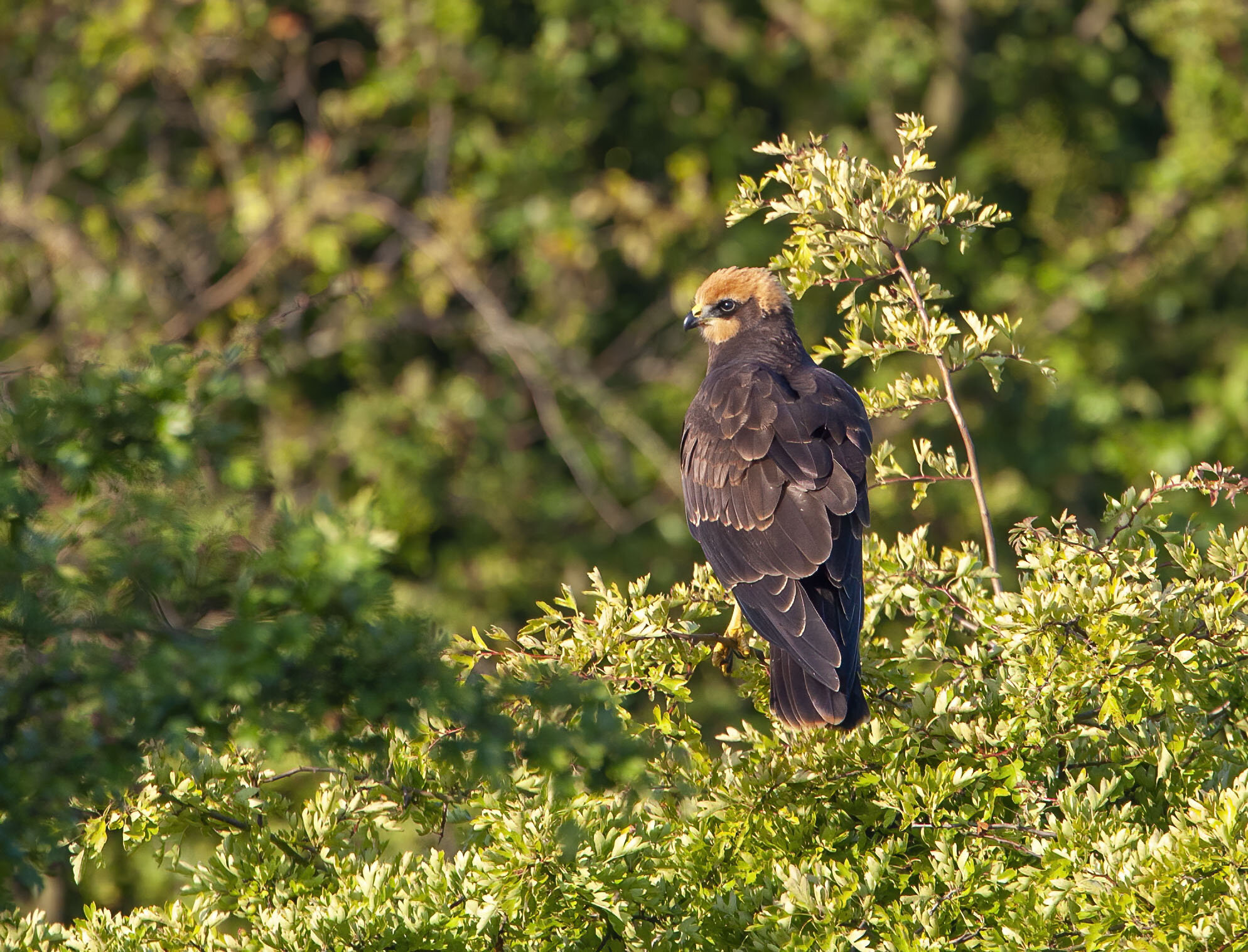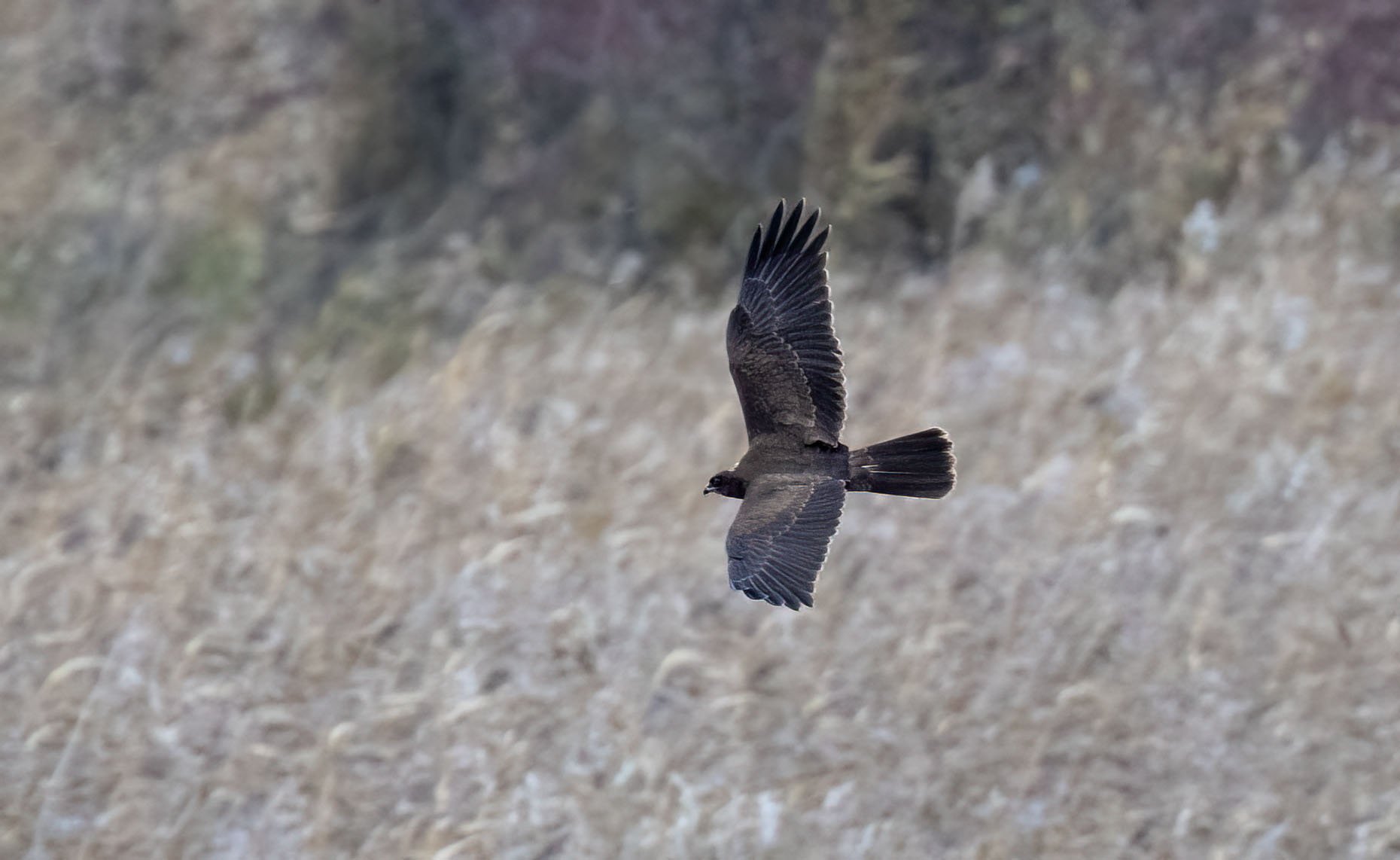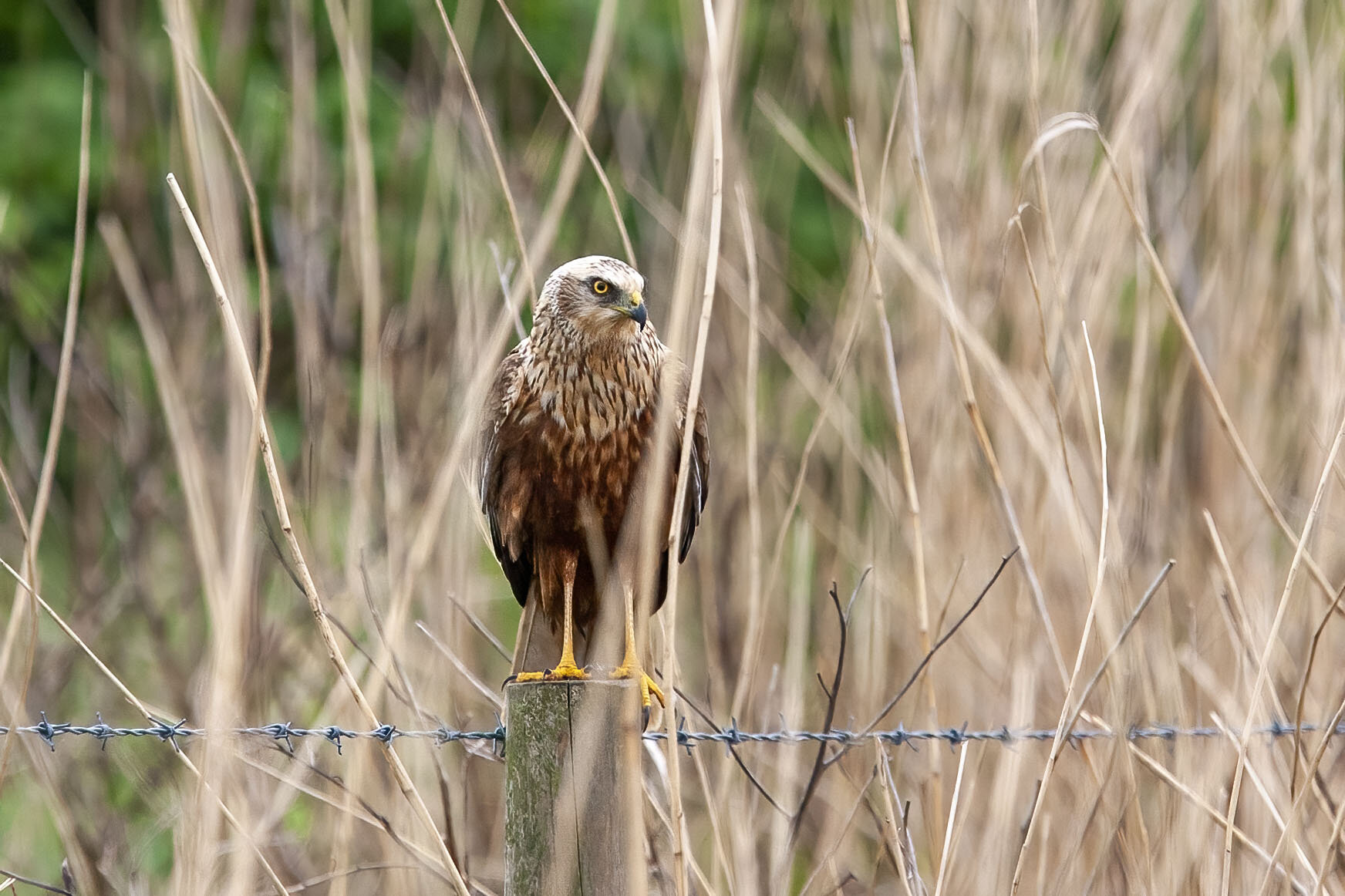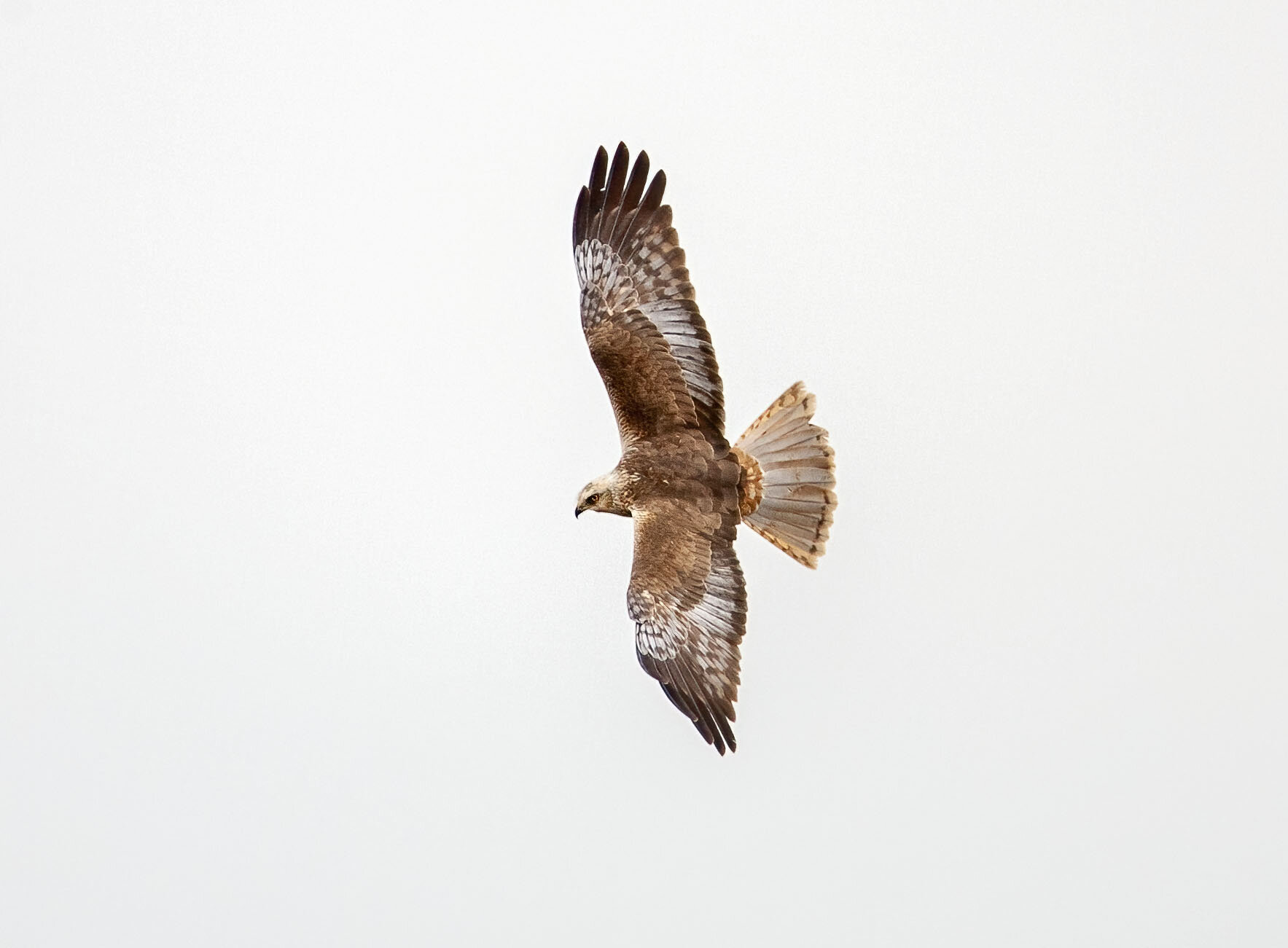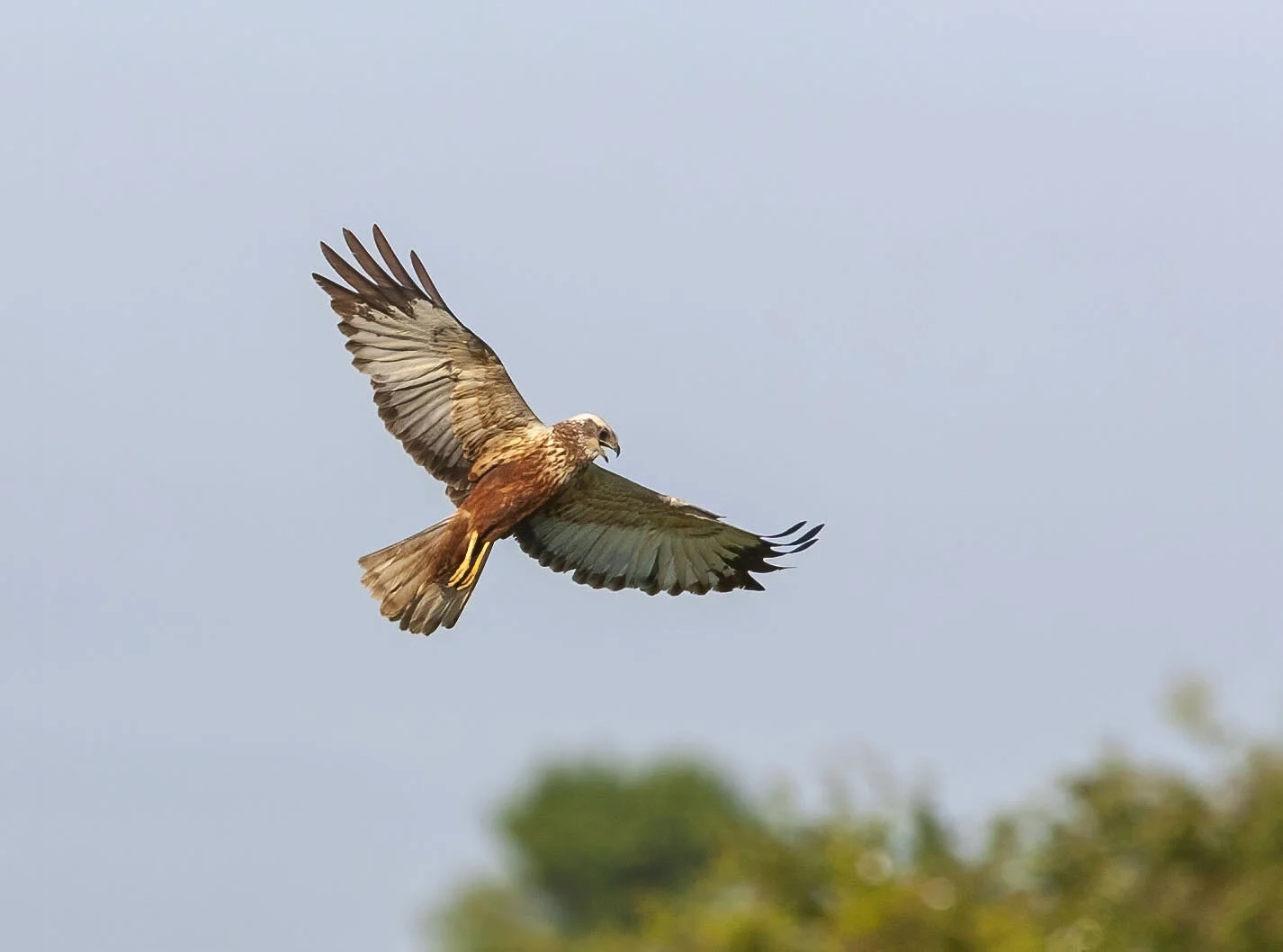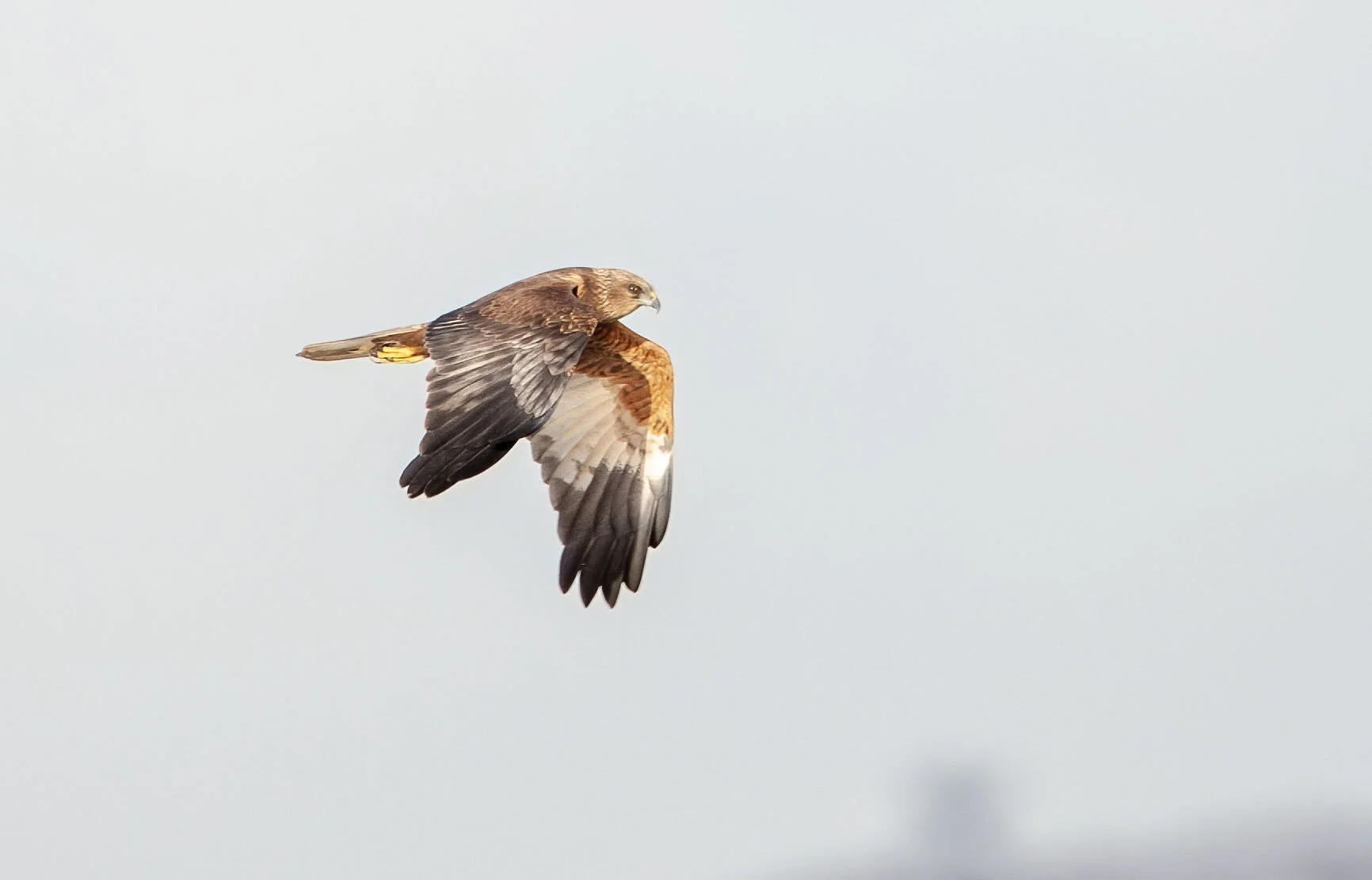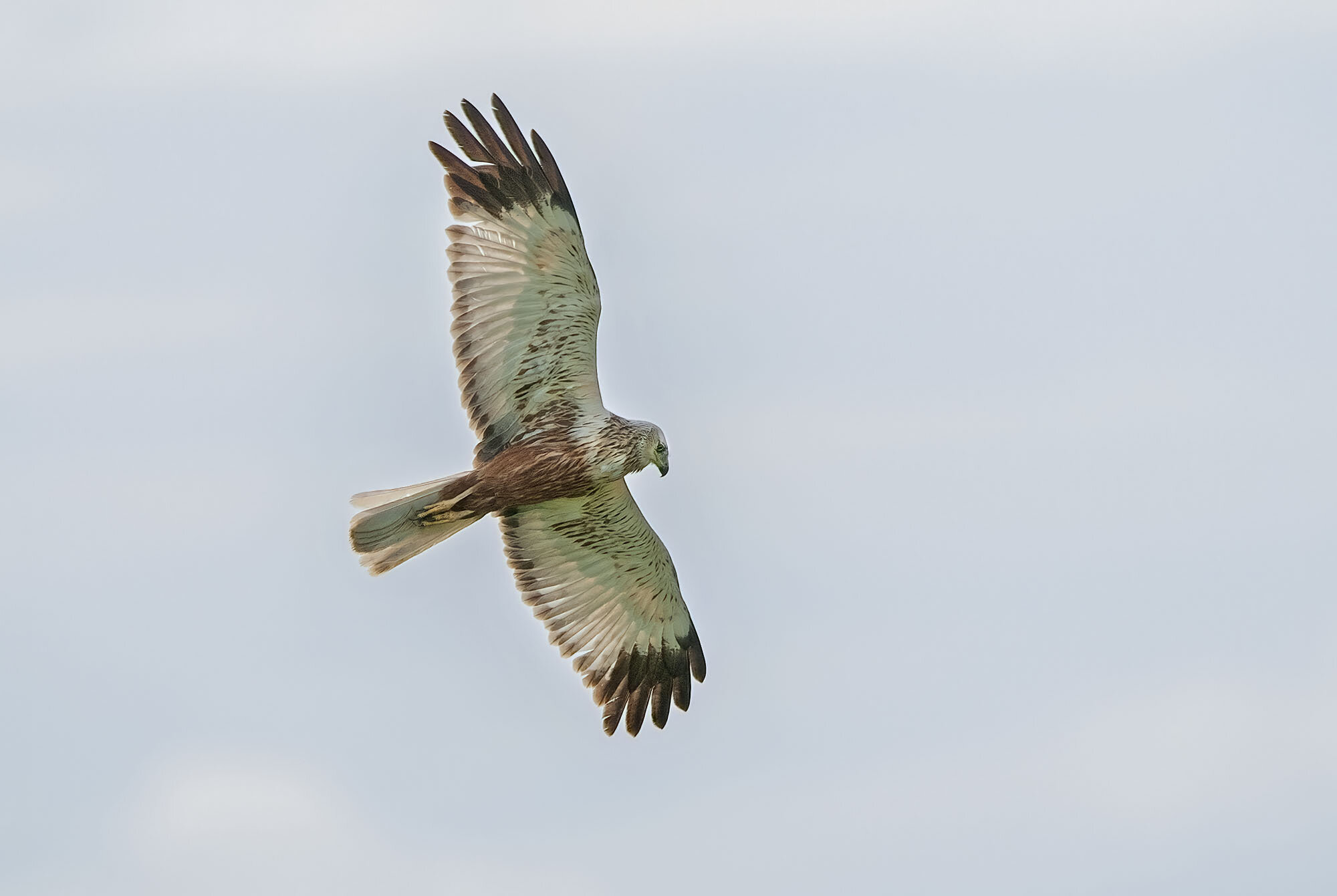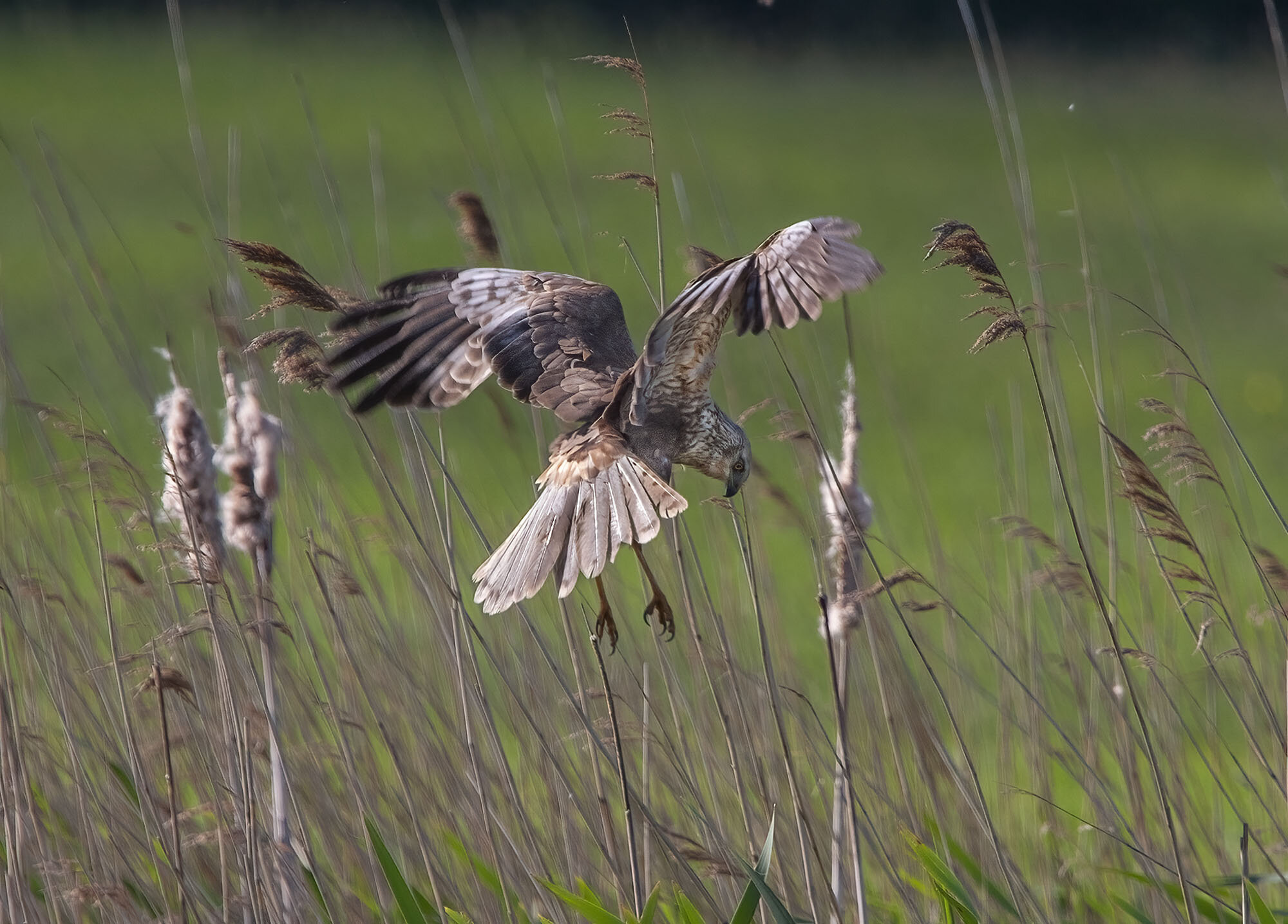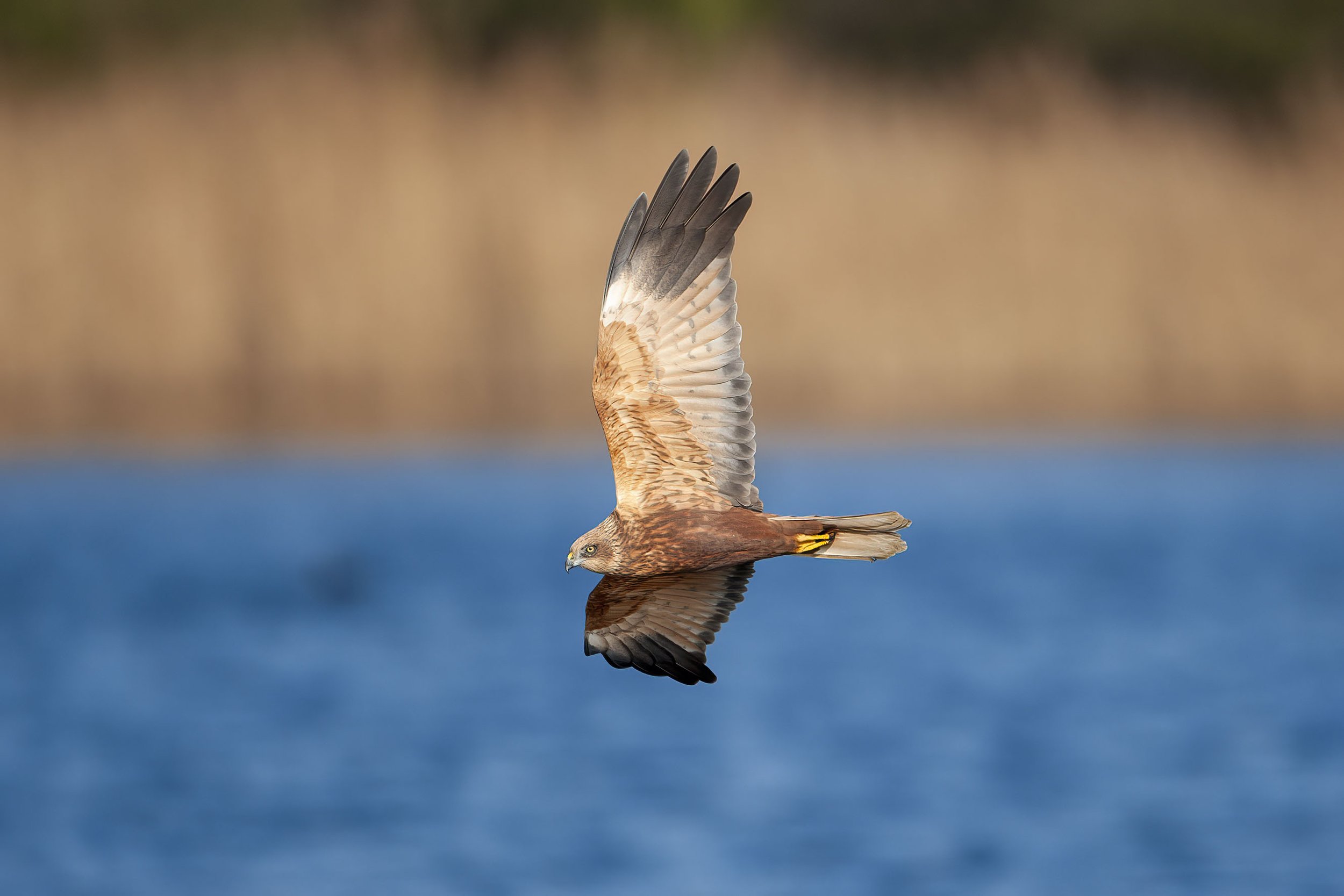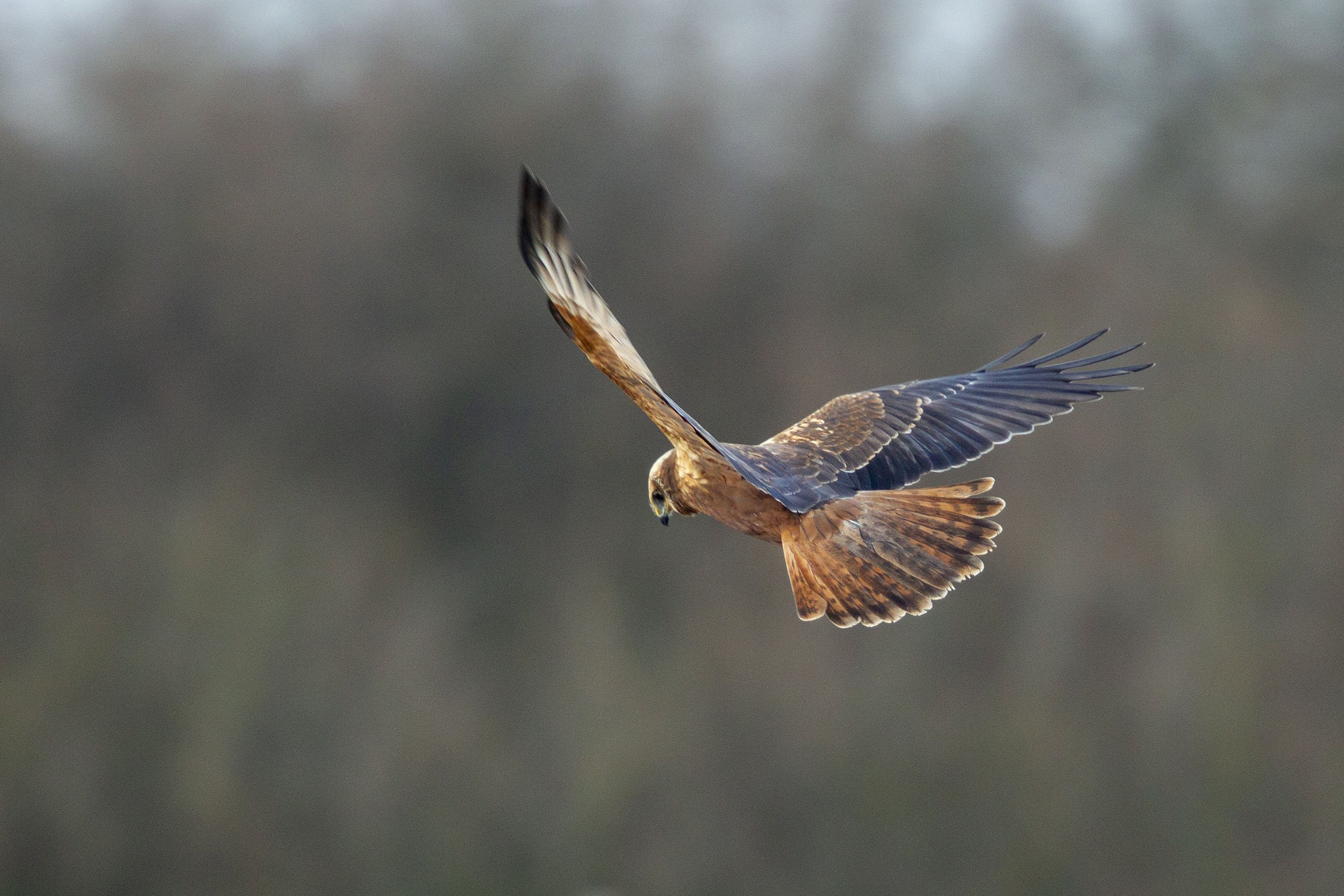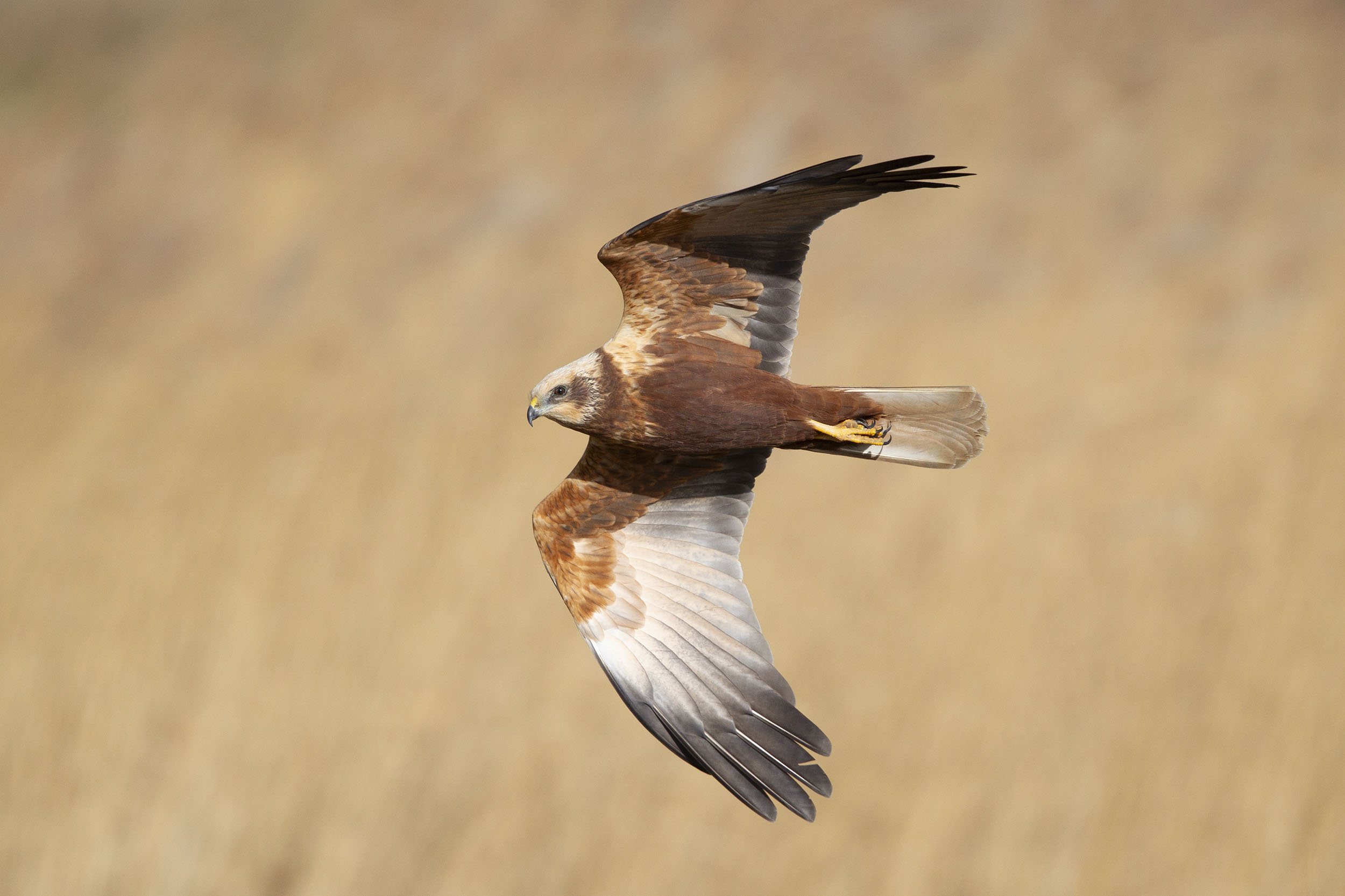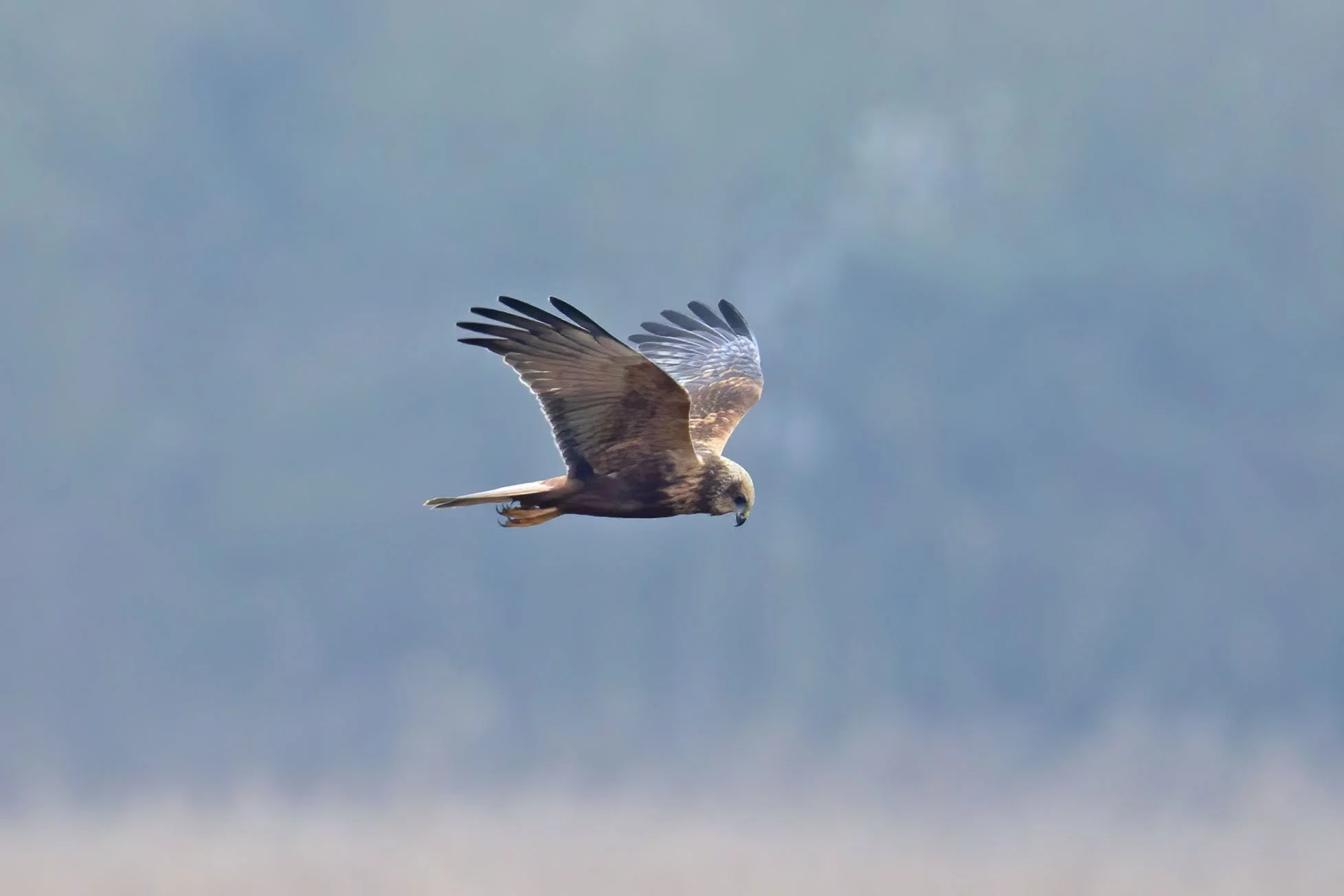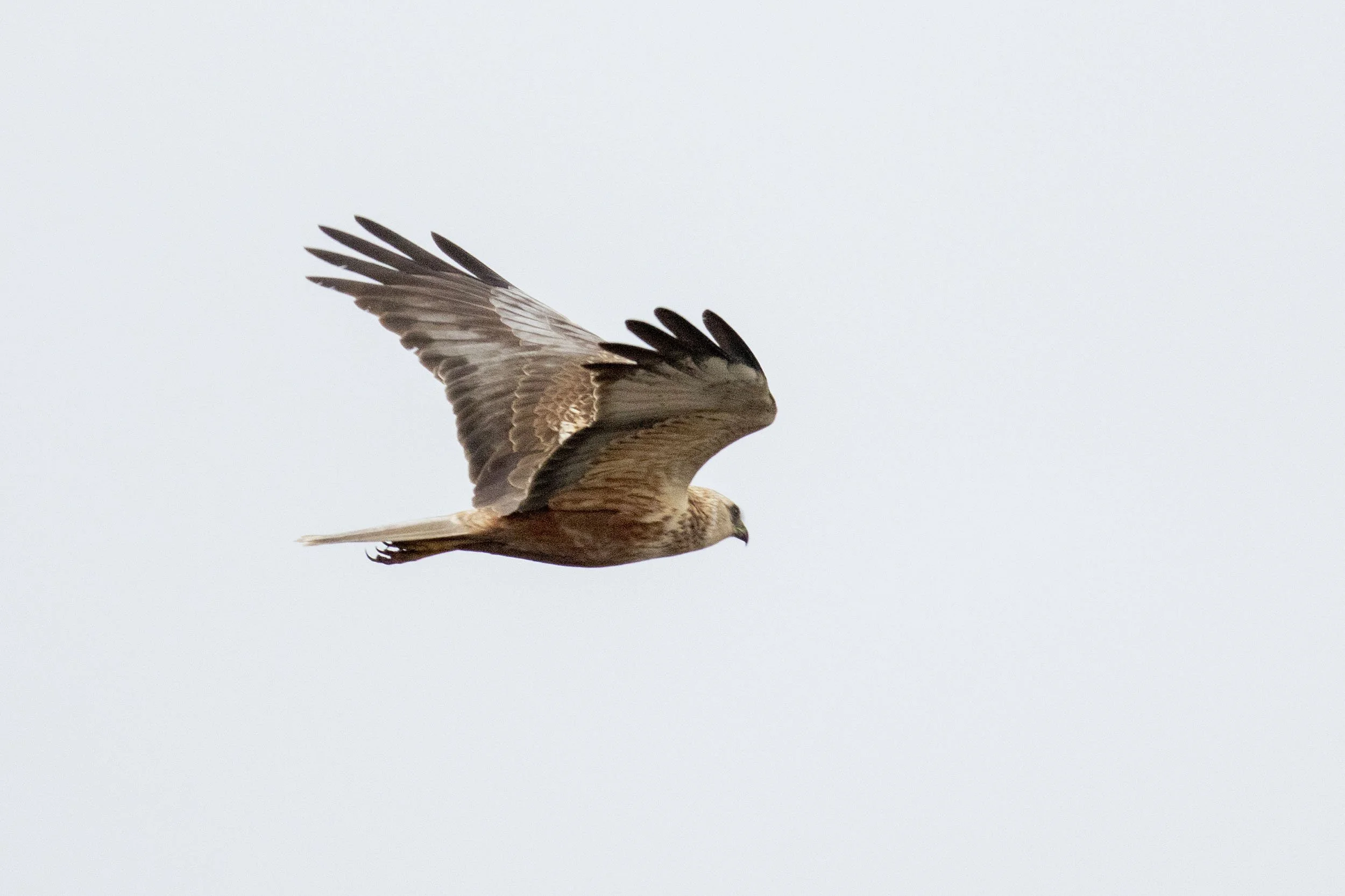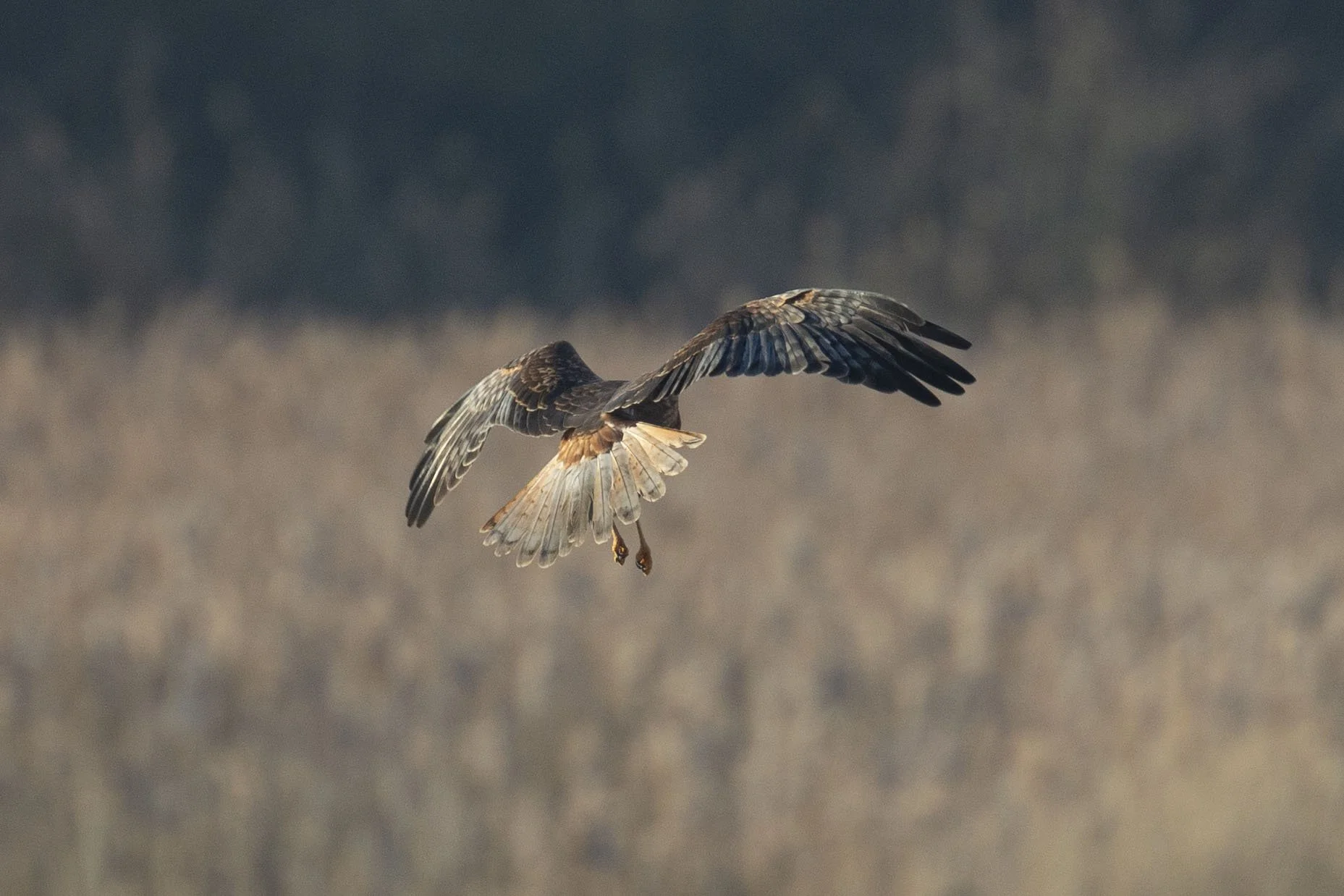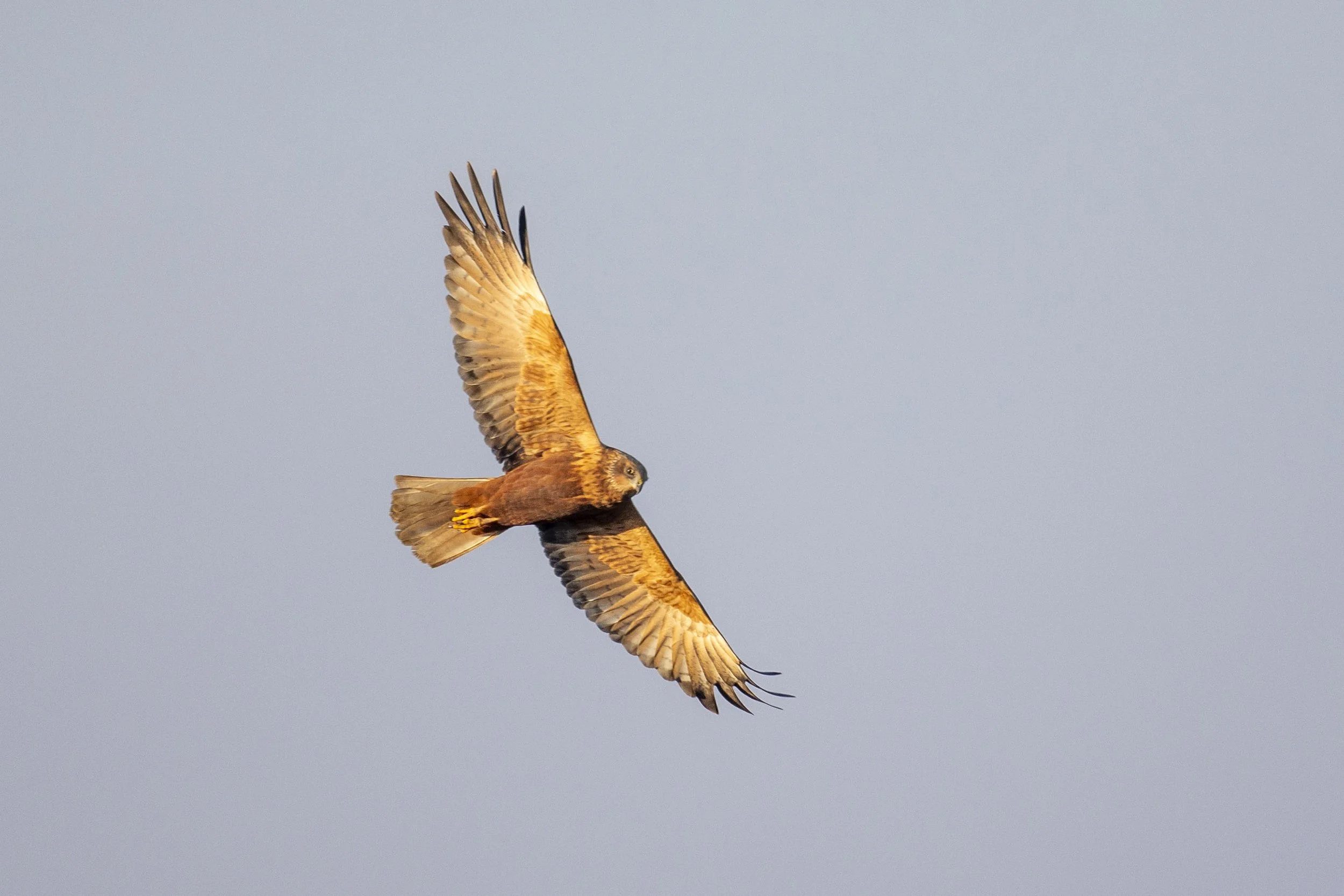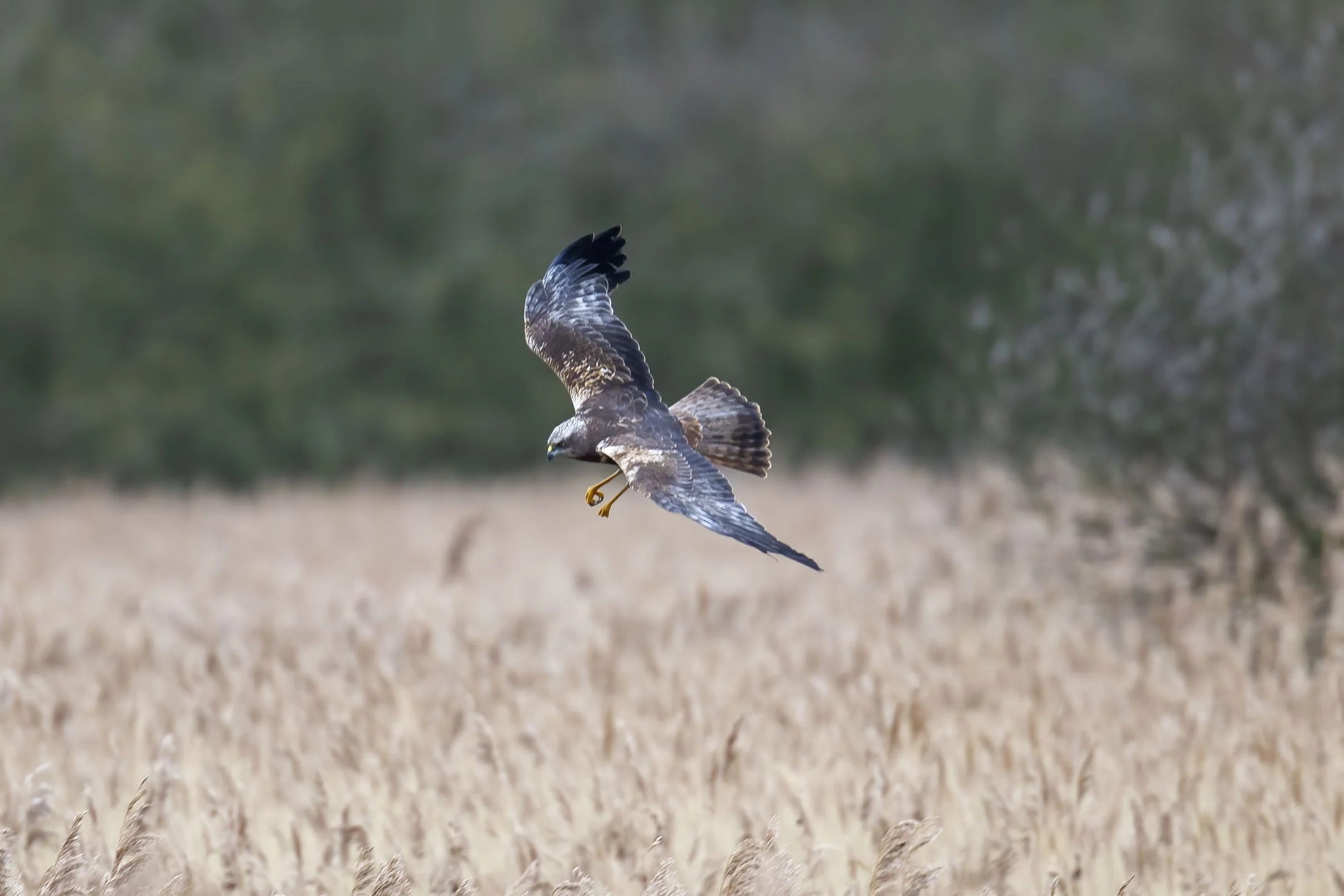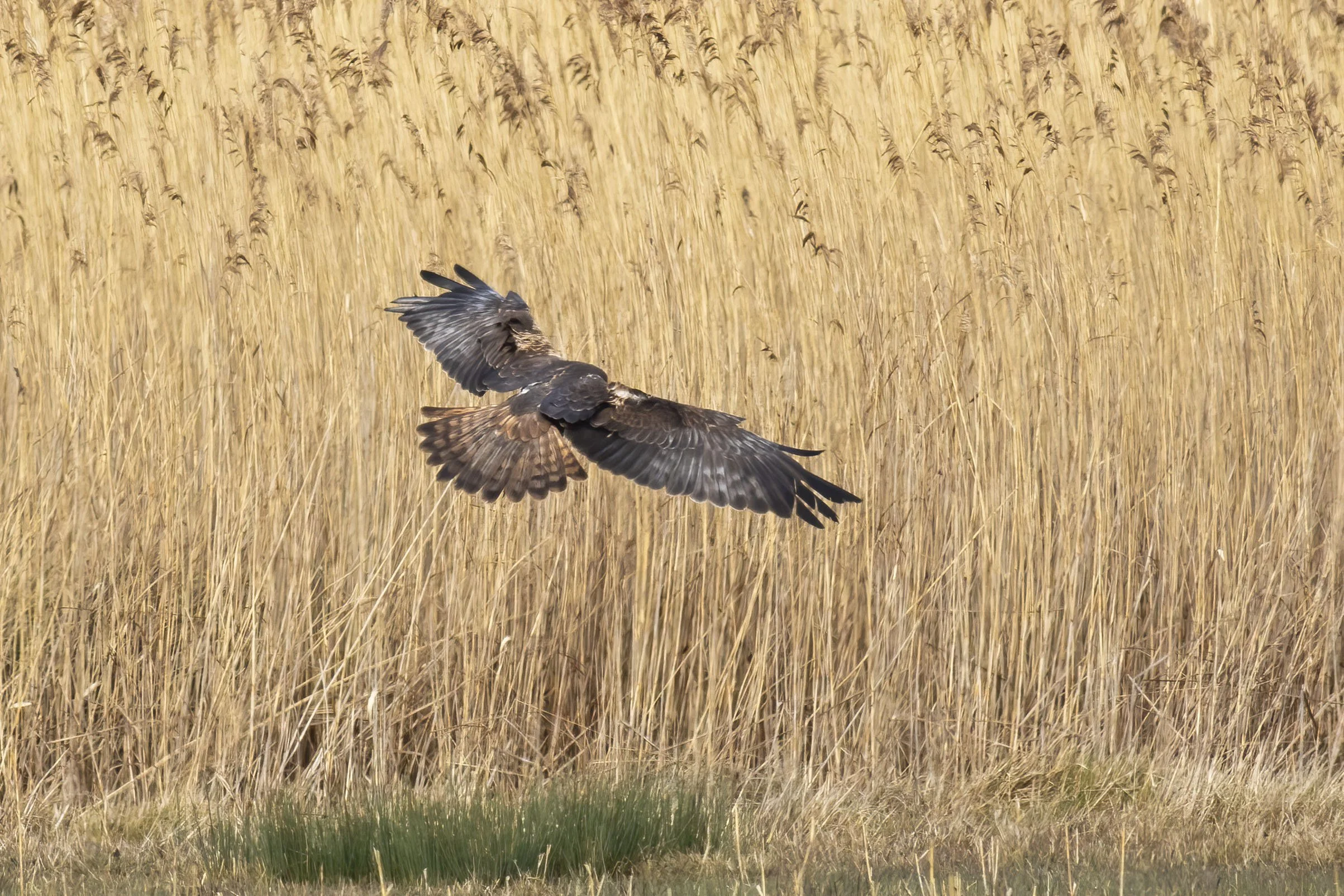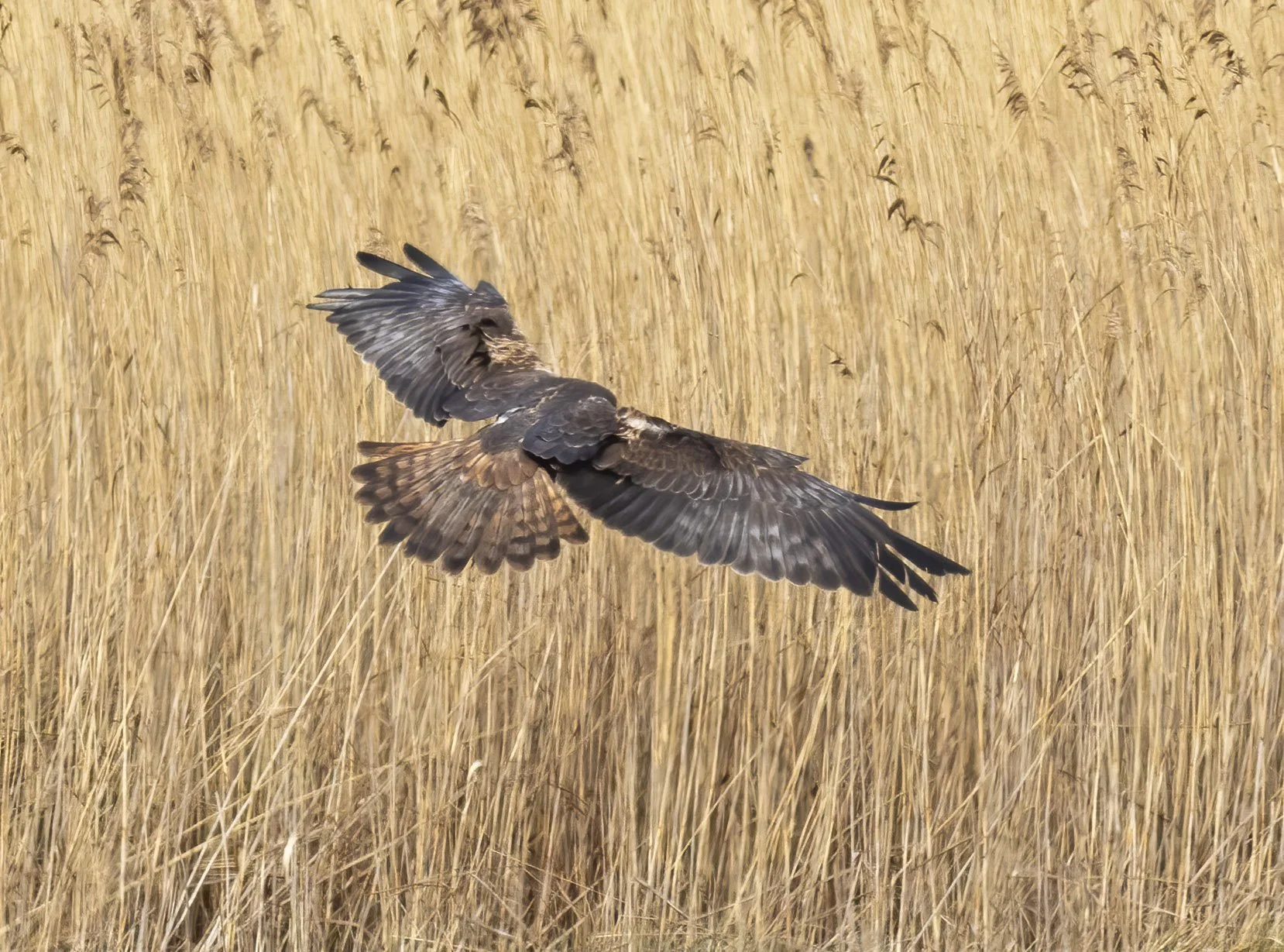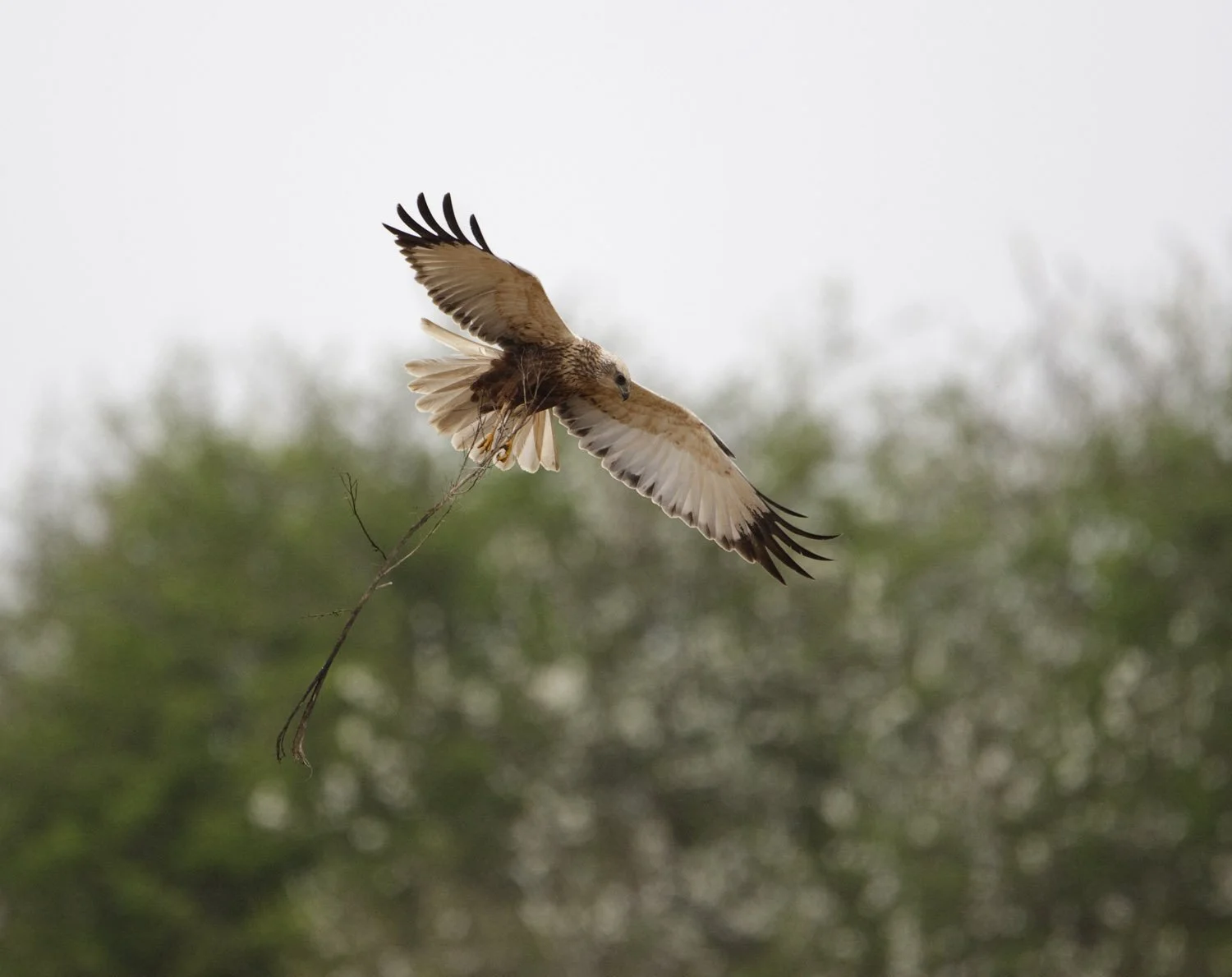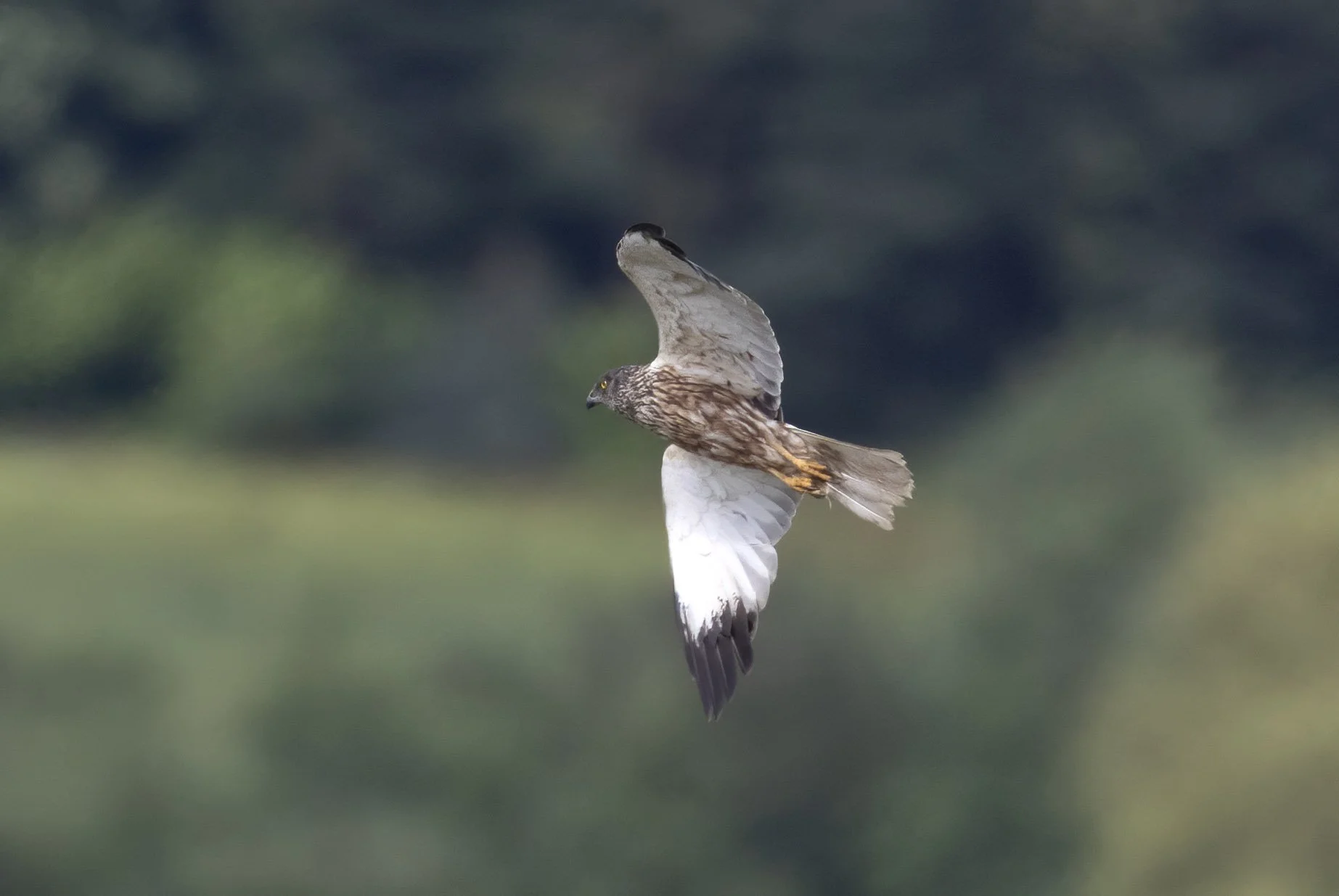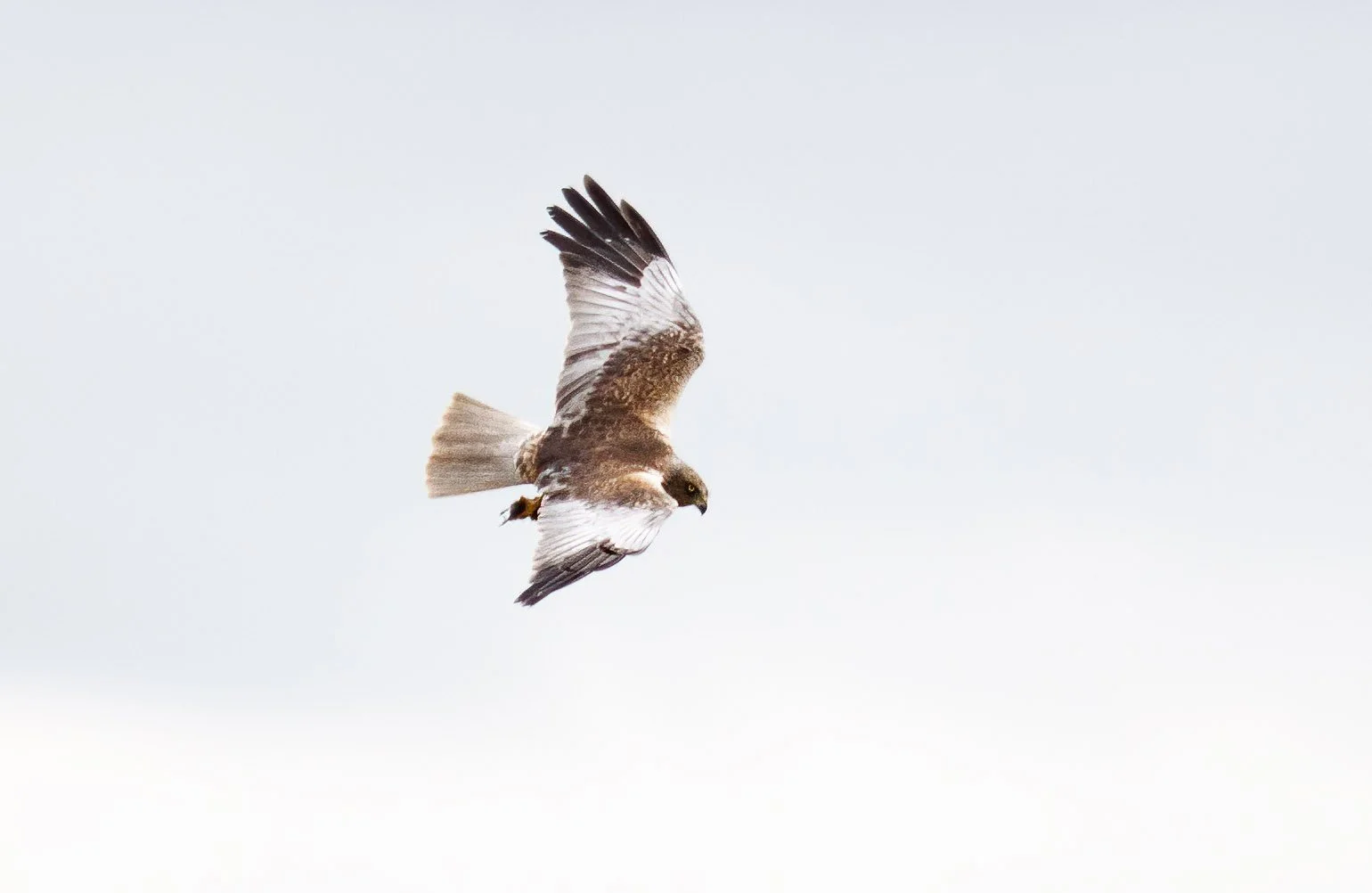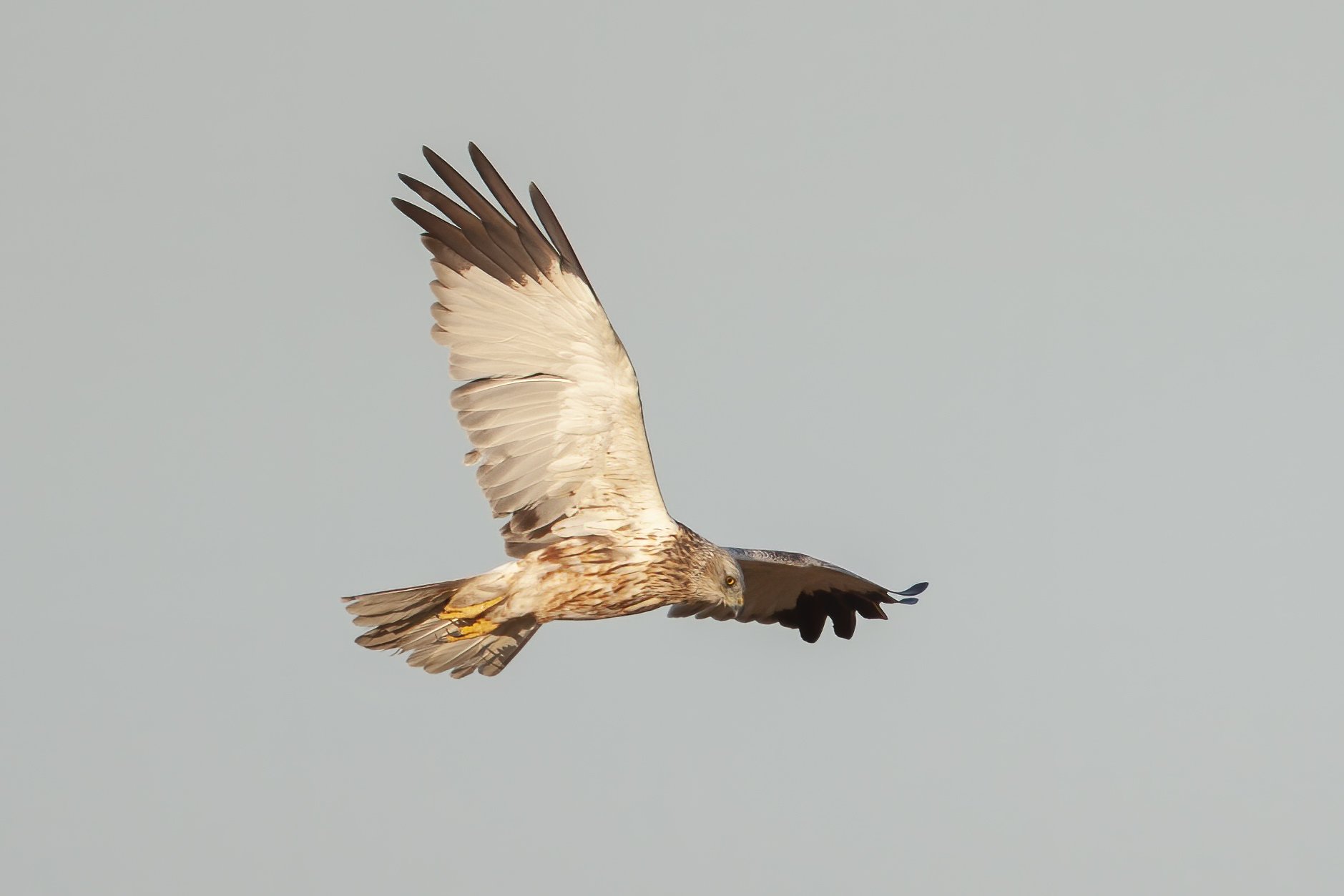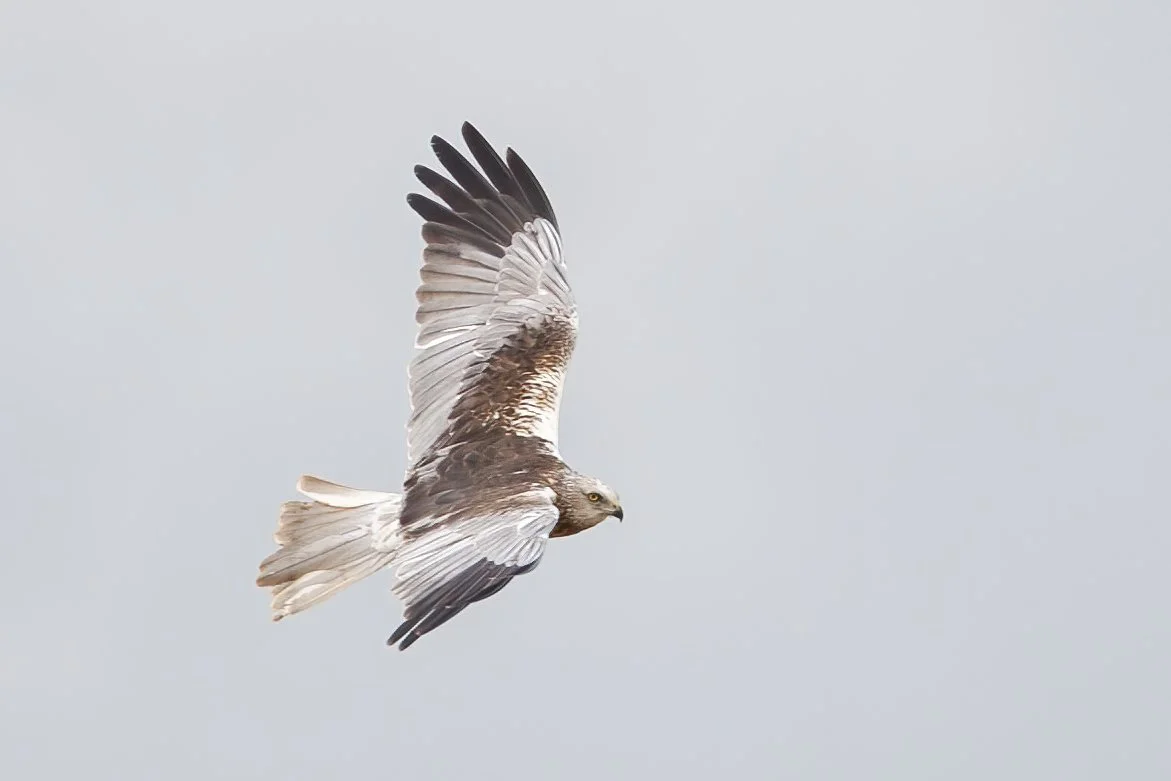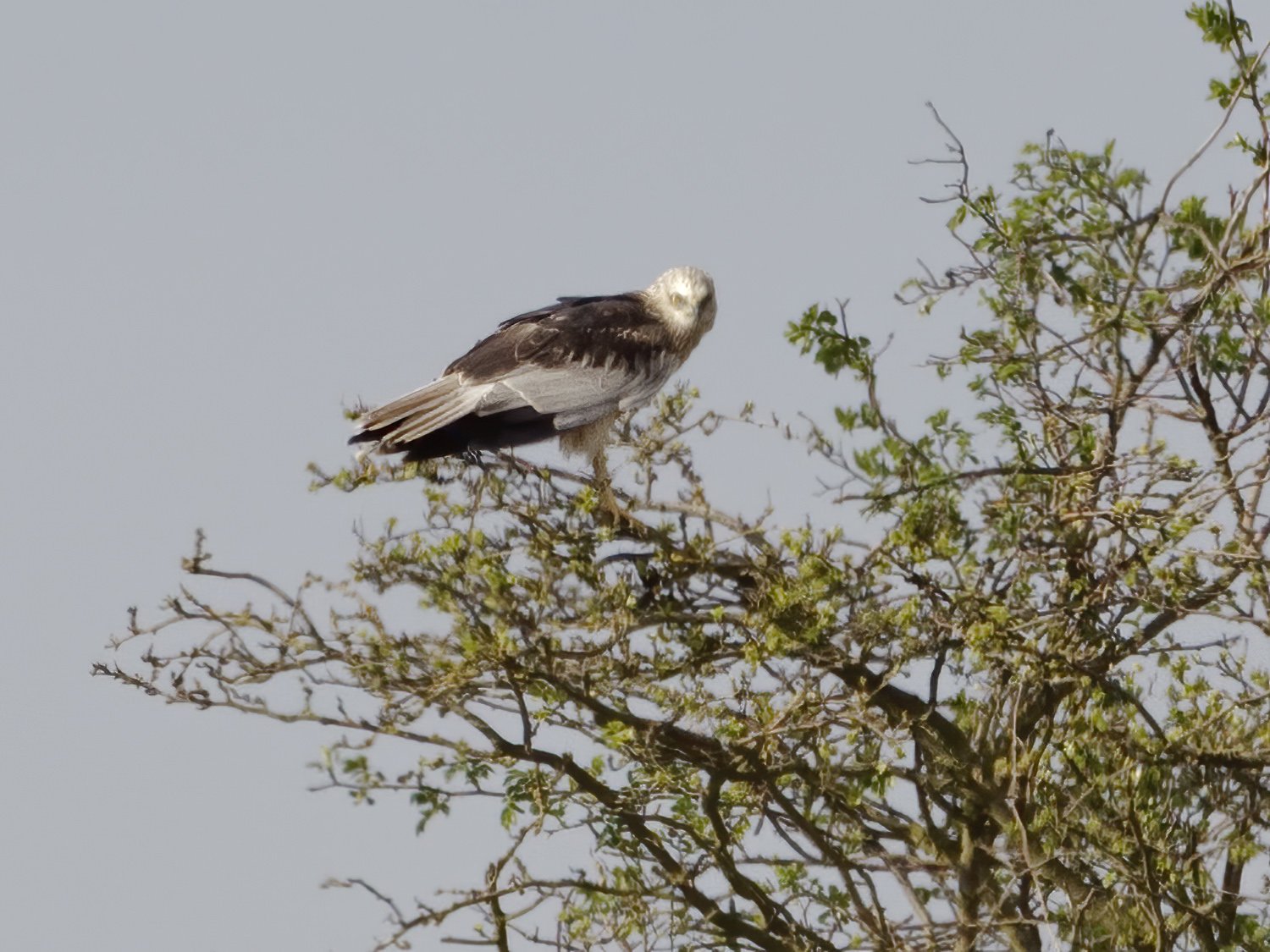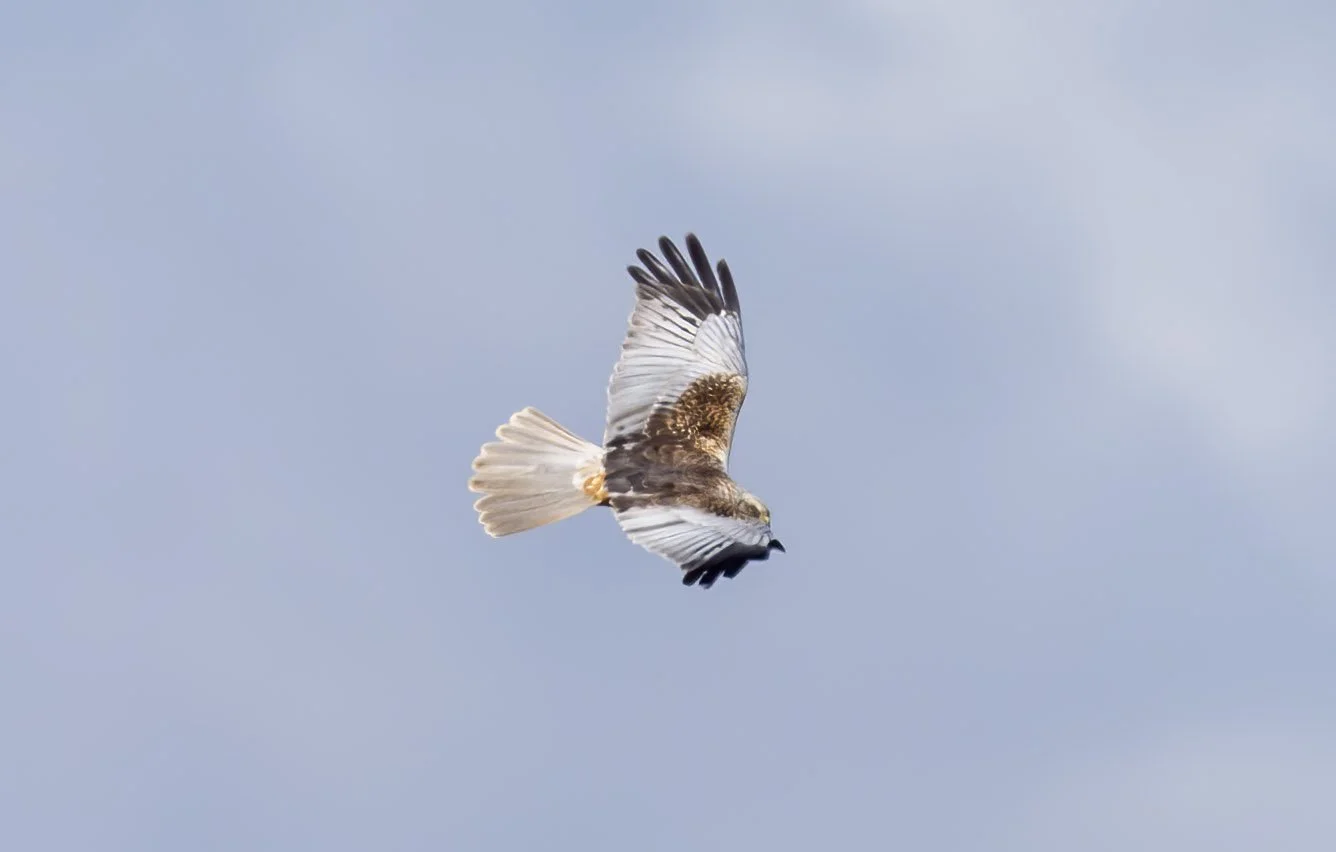All juvenile Marsh Harriers have the same distinctive dark chocolate brown plumage with a ginger to golden crown and chin-throat with some showing similar marks in the upperwing coverts. Sexing birds at this age depends on comparing size and structure with females noticeably larger and heavier than males and with thicker legs but direct comparison is often needed to make an accurate assessment of these features. Following the variable limited body moult in their first winter it is after their first full moult in their 2cy that the sexes can be separated on plumage but even in their 2cy summer or even 3cy summer some males can be remarkably similar to some females. Above is a typical newly fledged juvenile in July; on this view sexing this individual would be problematic.
Fresh juveniles in June - July are a rich dark chocolate brown with pale rusty feather tips to the coverts, tertials and tail feathers; the cere is variably yellow and the legs and feet bright shiny yellow; irides of males and females are dark at this stage.
The small looking head and attenuated profile suggest that this juvenile is a male
Pale tips to the flight feathers and tail show well when backlit as here but the tips to the tail feathers quickly wear off though pale tips to the greater coverts often persist into the first winter and combined with the uniform flight feathers make ageing easy in the first winter.
A brood of three newly fledged Marsh Harriers perched in hawthorn scrub by the nesting reedbed waiting for a food delivery from their parents. Direct comparison of birds at this age can reveal sex due to size differences and proportions; females tend to have larger and more bulky heads as well as larger overall dimensions.
Out of several 100 juvenile Marsh Harriers I have seen locally only two have been darker crowned with a restricted pale nape patch - although this bird appears dark crowned the effect is down to shadow as shown in the image below but this individual did have some dark feather admixed in the orange of the crown
Dark crowned juvenile Alkborough Flats November 2022 - this bird stayed in the area through the winter and even established a breeding territory in spring 2023 but failed to breed; it reappeared in autumn 2023
The pale spot on the nape of this bird was the only pale area on the head - from its proportions and displays in spring 2023 it was clearly a juvenile male
another shot of the dark crowned juvenile November 2022
This is a juvenile now 2cy in February still showing the pale tips to the greater coverts and greater primary coverts plus the secondaries and inner primaries; flight feathers and tail feather tips are getting worn and the crown is faded and more cream lacking the ginger tones of the fresh juveniles.
A 2cy female in March above and below. Wing feathers of uniform age with faded crown and chin and pale tips to tail and flight feathers virtually worn away. Note below the central tail feather has been moulted and is being replaced with a darker feather with an orange tip; if juveniles moult their central tail feather in their first partial post juvenile moult then the colour of the feather allows sexing in the following spring with males growing a more grey toned tail feather in general
Same 2cy female as above March. Note the growing central tail feather with a bright orange tip.
juvenile male Marsh Harrier October 2020 - this bird has moulted its central tail feather the new one being grey toned and hence this is a male
This bird in February is in it’s 3cy following its’ first full moult in its’ 2cy summer. A rather dull looking individual it is clearly a male with a grey sheen to the greater primary coverts and a very dull grey tone to the newly moulted brown tail which has a dark subterminal band. There is a huge variation in the tail pattern at this age and also the amount of grey in the upperwings - a selection of birds of this age is shown below demonstrating the variation.
The same bird as above in February. The pale bases to the new flight feathers contrast with the darker tips particularly on the primaries, the underparts are very dark on this bird but note also the small head and generally delicate looking proportions.
A 3cy male in April. The adoption of more adult male type plumage features is highly variable between individuals.
Same 3cy male as photo above April.
Following their first full moult in 2cy summer males become very variable and as noted by Forsman claiming precise ages related to plumage a virtually impossible in birds not of known age and in the summer of their 3cy birds look much more adult like but the grey in the wings and tail is dull and variably spangled and mottled and mixed with browner feathers such that telling 3cy summer from 4cy summer birds is not recommended and Forsman calls these young adult males. Below is a series of birds in their 3cy or 4cy summer showing the range of variation in the different plumage features.
Adult males from their 5cy onwards, though even then birds’ adoption of more adult plumage features varies between individuals, are strikingly three toned on the upperparts with silvery grey tails and inner wings contrasting with black wing tips and brown mantle, back and lesser and median coverts while the head becomes pale rusty toned with darker streaking.
Some exceptional adult males become very pale - the suggestion is that these birds are very old but clearly some very old birds do not become as pale as the birds below and the development of such plumage traits may be genetic? In essence the grey areas of the plumage become almost white while the mantle and back become darker almost blackish brown but the underparts are strikingly white except for the restricted black tips to the flight feathers.


